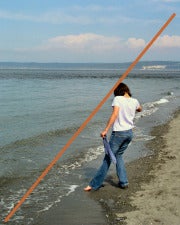Your report, done in Prezi, will be due next Tuesday for presentation to the class.
Stephen Alvarez Yasmine
Pablo Bartholmew Jacob
Robert Capa Austin
Felice Beato Tyshon
Spider Martin Aleah
W. Eugene Smith Mitchell
Zoriah Jaymee
Carol Guzy Grace
Stan Honda Saisha
Lewis Hine Tyshay
Eddie Adams Isaiah
James Nachtwey Izzy
Josh
Margaret Bourke-White Karlamarie
Lucian Perkins Radezia
10 top Rules of Photographic Composition
You will want to be aware of these rules as you prepare your Prezi about a photojournalist, as well as your own project!
www.photographymad.com/pages/view/10-top-photography-composition-rules
10 Top Photography Composition Rules
It may sound clichéd, but the only rule in photography is that there
are no rules. However, there are are number of established composition
guidelines which can be applied in almost any situation, to enhance the
impact of a scene.
These guidelines will help you take more compelling photographs,
lending them a natural balance, drawing attention to the important parts
of the scene, or leading the viewer's eye through the image.
Once you are familiar with these composition tips, you'll be surprised
at just how universal most of them are. You'll spot them everywhere, and
you'll find it easy to see why some photos "work" while others feel
like simple snapshots.
Rule of Thirds
Imagine that your image is divided into 9 equal segments by 2 vertical and 2 horizontal lines. The
rule of thirds
says that you should position the most important elements in your scene
along these lines, or at the points where they intersect.
Doing so will add balance and interest to your photo. Some cameras even
offer an option to superimpose a rule of thirds grid over the LCD
screen, making it even easier to use.

Notice how the building and horizon are aligned along rule-of-thirds lines. Image by
Trey Ratcliff.
Balancing Elements
Placing your main subject off-centre, as with the rule of thirds,
creates a more interesting photo, but it can leave a void in the scene
which can make it feel empty. You should balance the "weight" of your
subject by including another object of lesser importance to fill the
space.

Here, the visual "weight" of the road sign is balanced by the building on the other side of the shot. Image by
Shannon Kokoska.
Leading Lines
When we look at a photo our eye is naturally drawn along lines. By
thinking about how you place lines in your composition, you can affect
the way we view the image, pulling us into the picture, towards the
subject, or on a journey "through" the scene. There are many different
types of line - straight, diagonal, curvy, zigzag, radial etc - and each
can be used to enhance our photo's composition.

The road in this photo draws your eye through the scene. Image by
Pierre Metivier.
Symmetry and Patterns
We are surrounded by symmetry and patterns, both natural and man-made.,
They can make for very eye-catching compositions, particularly in
situations where they are not expected. Another great way to use them is
to break the symmetry or pattern in some way, introducing tension and a
focal point to the scene.

The symmetry of this chapel is broken by the bucket in the bottom right corner. Image by
Fabio Montalto.
Viewpoint
Before photographing your subject, take time to think about where you
will shoot it from. Our viewpoint has a massive impact on the
composition of our photo, and as a result it can greatly affect the
message that the shot conveys. Rather than just shooting from eye level,
consider photographing from high above, down at ground level, from the
side, from the back, from a long way away, from very close up, and so
on.

The unusual viewpoint chosen here creates an intriguing and slightly abstract photo. Image by
ronsho.
Background
How many times have you taken what you thought would be a great shot,
only to find that the final image lacks impact because the subject
blends into a busy background? The human eye is excellent at
distinguishing between different elements in a scene, whereas a camera
has a tendency to flatten the foreground and background, and this can
often ruin an otherwise great photo. Thankfully this problem is usually
easy to overcome at the time of shooting - look around for a plain and
unobtrusive background and compose your shot so that it doesn't distract
or detract from the subject.

The plain background in this composition ensures nothing distracts from the subject. Image by
Philipp Naderer.
Depth
Because photography is a two-dimensional medium, we have to choose our
composition carefully to conveys the sense of depth that was present in
the actual scene. You can create depth in a photo by including objects
in the foreground, middle ground and background. Another useful
composition technique is overlapping, where you deliberately partially
obscure one object with another. The human eye naturally recognises
these layers and mentally separates them out, creating an image with
more depth.

Emphasise your scene's depth by including interesting subjects at varying distances from the camera. Image by
Jule Berlin.
Framing
The world is full of objects which make perfect natural frames, such as
trees, archways and holes. By placing these around the edge of the
composition you help to isolate the main subject from the outside world.
The result is a more focused image which draws your eye naturally to
the main point of interest.

Here, the surrounding hills form a natural frame, and the piece of wood provides a focal point. Image by
Sally Crossthwaite.
Cropping
Often a photo will lack impact because the main subject is so small it
becomes lost among the clutter of its surroundings. By cropping tight
around the subject you eliminate the background "noise", ensuring the
subject gets the viewer's undivided attention.

Cut out all unnecessary details to keep keep the viewer's attention focused on the subject. Image by
Hien Nguyen.
Experimentation
With the dawn of the digital age in photography we no longer have to
worry about film processing costs or running out of shots. As a result,
experimenting with our photos' composition has become a real
possibility; we can fire off tons of shots and delete the unwanted ones
later at absolutely no extra cost. Take advantage of this fact and
experiment with your composition - you never know whether an idea will
work until you try it.

Digital photography allows us to experiment with different compositions until we find the perfect one. Image by
Jule Berlin.
Composition in photography is far from a science, and as a result all
of the "rules" above should be taken with a pinch of salt. If they don't
work in your scene, ignore them; if you find a great composition that
contradicts them, then go ahead and shoot it anyway. But they can often
prove to be spot on, and are worth at least considering whenever you are
out and about with your camera.
Again, more advice for you to follow.
The Rules of Photographic Composition
Take Better Photos With Your Digital Camera
Follow the Rule of Thirds


Most
people are at least somewhat familiar with the rule of thirds. The rule
of thirds is utterly ubiquitous: Every movie and TV show makes almost
constant use of it, and professional photographers avoid putting the
subject in the center of the frame almost without exception. To
understand it, draw two lines through a photo, dividing it into thirds.
This turns it into something like a tic-tac-toe board, as you see here.


At
its essence, the rule of thirds says that you'll get the most
interesting photos when your subject isn't in the center of the frame,
but rather is positioned off-center, to the left, right, up, or down.
You can position your subject at any of the four intersection points of
the third lines, or along one of the four lines, like the birds in this
example.
Use Diagonals to Your Advantage


Here's
another trick using lines: If you want to add a sense of drama to your
photograph, look for ways to incorporate a diagonal. Draw a mental line
from one corner of the scene to the other; if you can find some element
in the situation that more or less follows this line, it can make your
shot more dynamic and add some energy to the scene, almost as if it's
pulling the viewer through the scene. The diagonal can run the entire
length of the photo, as it does in this photo.


But
it's not critical for your diagonal to span the entire photo. You can
get essentially the same effect even with a partial diagonal, such as
this.
Break the Monotony


This
is a fun one. No doubt you've seen photos in which most of the frame is
filled with more or less the same thing: a field of grass, a pile of
pennies, rocks, fish, stars in the night sky. Such photos truly would be
monotonous if that's all they offered, but often, the photographer will
incorporate one out-of-place element that attracts your eye like a
magnet. With that in mind, this rule says that you should look for
photos that are mostly uniform and then break the pattern with an
element that disturbs the natural flow or organization of the scene.
Make it Symmetric (and Then Disturb Your Symmetry)
Rules, of course, are meant to be broken. The rule of symmetry is all
about capturing the natural symmetry in nature. There are a few ways to
do this. You might shoot a scene in which both sides of your photo are
essentially the same, for example. Or you might shoot a photo of
something that is itself quite symmetrical, like a flower.


Even
better, though, is when you incorporate a lesson from the rule about
monotonous content and shake things up with a little variation. Surprise
the viewer, either by making one side of the photo nonsymmetrical, or,
in this example, defeat the symmetry of the flower by shooting only part
of it in the frame.
Position Movement Into the Frame


One
of my favorite photo subjects is motion. I like capturing the essence
of speed and energy in what's by its very definition a static art form.
But how you introduce that motion into your photo is really important.
Whether you're shooting a speeding car, an airplane, a flock of birds,
or a running dog, be sure that the motion leads into the frame, not out
of it. By that, I mean you should give the leading edge of your moving
subject plenty of room; it should be positioned on a third line (see the
rule of thirds) and pointed at the center of the frame, not at the
closest edge, as you see in this shot.
















